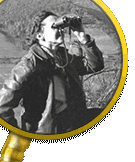Caption: John Lewis Krimmel (1787-1821) painted portraits and pictures of Philadelphia, like this celebration scene at the waterworks and surrounding grounds of his beloved city.
Courtesy of the Historical Society of Pennsylvania
Caption: Christ Healing the Sick, c. 1804-1805, by Benjamin West (1738-1820).
Courtesy of the State Museum of Pennsylvania, Pennsylvania Historical and Museum Commission, Gift of Benjamin Bernstein
Caption: Benjamin Franklin, by Charles Willson Peale, 1785.
Courtesy of the Pennsylvania Academy of Fine Art
Caption: Lamentation at the Foot of the Cross, A Pieta, n.d., by
John Valentine Haidt (1700-1780).
Courtesy of the State Museum of Pennsylvania, Pennsylvania Historical and Museum Commission. 05.129.1
Caption: Nativity with Adoration of the Shepherds, n.d., by John Valentine Haidt (1700-1780).
Courtesy of the State Museum of Pennsylvania, Pennsylvania Historical and Museum Commission
Caption: The Death of General Montgomery at the Attack on Quebec, by John Trumbull, 1786
Yale University Art Gallery Trumbull Collection
Caption: In 1771, Charles Willson Peale painted this portrait of actress Nancy Hallam, dressed in her costume as the boy Fidele in Shakespeare's Cymbeline. Hallam was a cousin of Lewis Hallam the younger, who in 1752 had brought the first theater company from England to the colonies. Based in New York, Hallam's company also performed in Philadelphia in the 1750s and 1760s.
Courtesy of the Colonial Williamsburg Foundation
Caption: George Washington at Princeton. Washington ordered the Sullivan Campaign as the Continental Army's major offensive operation in 1779. Even though Washington was not a part of the campaign, he earned the nickname "Town Destroyer" from the Iroquois for its destructive impact on their homelands.
Courtesy of the U.S. Senate Collection
Caption: After coming to Philadelphia from Germany in 1810, John Lewis Krimmel (1787-1821) painted portraits and pictures of his adopted city, including this wonderful 1815 canvas, Election Day in Philadelphia, which captures the excitement and festivity of elections in the decades that followed American independence.
Courtesy Winterthur Museum





